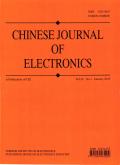基于RANSAC-K-Means聚类的多类型GNSS用户分类
IF 3
4区 计算机科学
Q3 ENGINEERING, ELECTRICAL & ELECTRONIC
引用次数: 0
摘要
北斗卫星导航系统(BDS-3)为全球陆地、海上和航空用户提供定位、导航和授时(PNT)服务。然而,如何对这三种具有复杂运动模式的用户进行分类,对PNT系统的监测和评估工作提出了很大的挑战。为了对多类型GNSS用户进行准确分类,本文提出了一种结合随机样本共识(RANSAC)和K-means聚类的方法,对海量用户的运动进行跟踪,并根据用户在不同区域的动态特征对其进行分类,称为RANSAC-K-means。模拟的海量用户数据表明,本文算法的识别率超过83.22%,与传统方法相比,RANSAC-K-means方法的识别率提高了11.16%。RANSAC-K-means方法可以在多类型用户呈现显著差异的动态特征的情况下提供更准确的聚类结果,具有显著的稳定性和鲁棒性。该方法更适合于对卫星导航系统的服务性能进行监测和评估。本文章由计算机程序翻译,如有差异,请以英文原文为准。
Multi-Type GNSS User Classification Using RANSAC-K-Means Clustering
The BeiDou Navigation Satellite System (BDS-3) has provided positioning, navigation and timing (PNT) services to global users across land, maritime, and aviation. However, how to classify these three types of users with complex movement patterns poses great challenges to the work of monitoring and evaluating the PNT system. To accurately classify multi-type global navigation satellite system (GNSS) users, this paper proposes a method that combines random sample consensus (RANSAC) and K-means clustering to track the movements of massive users and classify them based on their dynamic characteristics in different areas, which is noted as RANSAC-K-means. The simulated massive user data show that the recognition rate of the proposed algorithm exceeds 83.22%, and compared with the conventional method, the proposed RANSAC-K-means method improved the recognition rate by 11.16%. The RANSAC-K-means method can provide more accurate clustering results under the situations where multi-type users present dynamic characteristics with significant differences, showing significant stability and robustness. The proposed method is more suitable for monitoring and evaluating the service performance of satellite navigation systems.
求助全文
通过发布文献求助,成功后即可免费获取论文全文。
去求助
来源期刊

Chinese Journal of Electronics
工程技术-工程:电子与电气
CiteScore
3.70
自引率
16.70%
发文量
342
审稿时长
12.0 months
期刊介绍:
CJE focuses on the emerging fields of electronics, publishing innovative and transformative research papers. Most of the papers published in CJE are from universities and research institutes, presenting their innovative research results. Both theoretical and practical contributions are encouraged, and original research papers reporting novel solutions to the hot topics in electronics are strongly recommended.
 求助内容:
求助内容: 应助结果提醒方式:
应助结果提醒方式:


